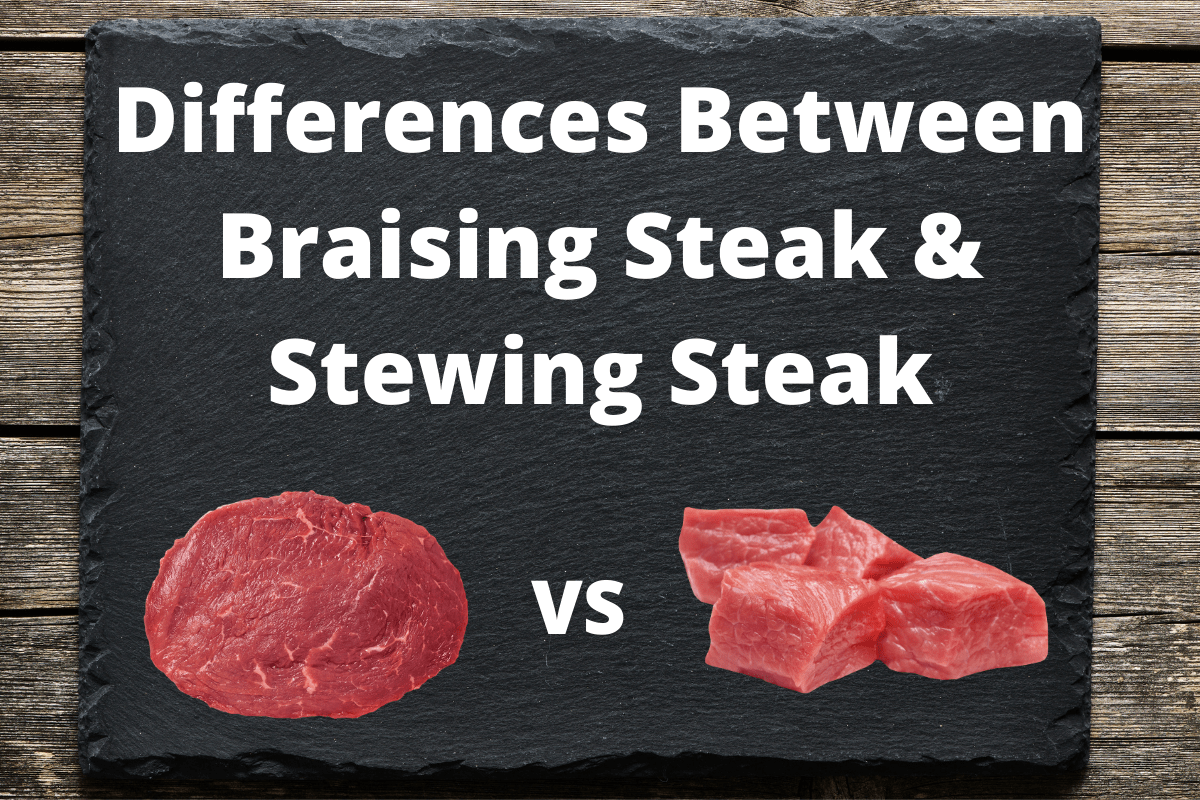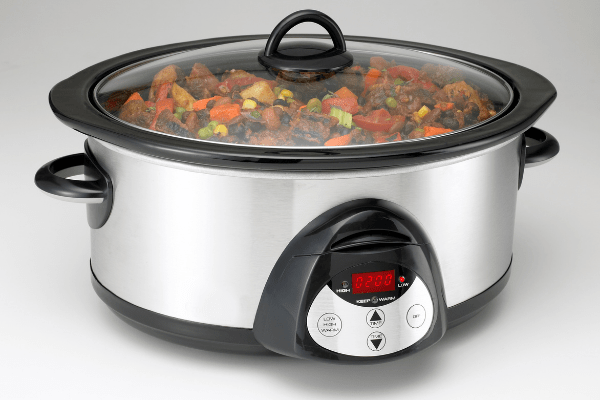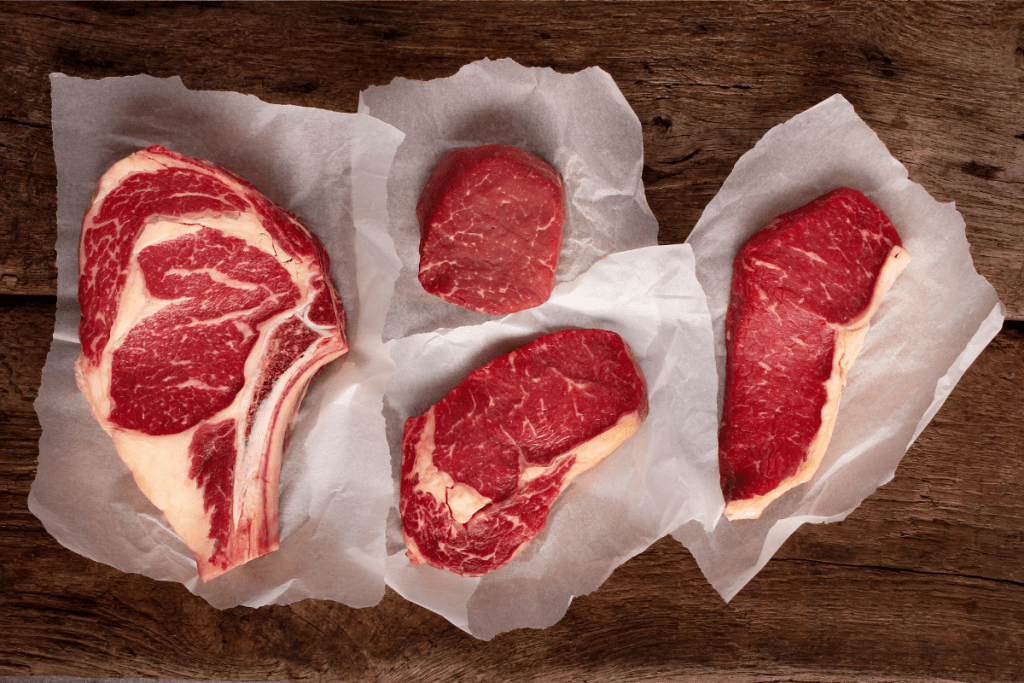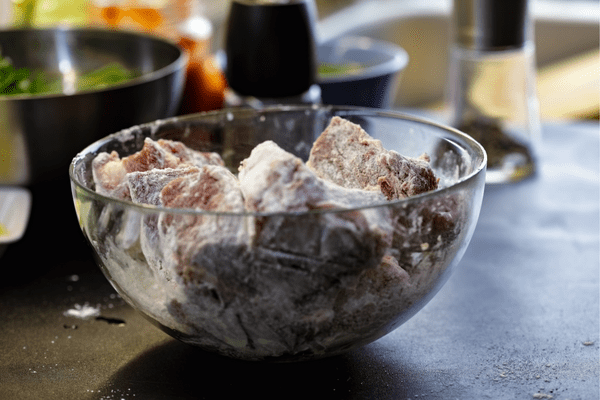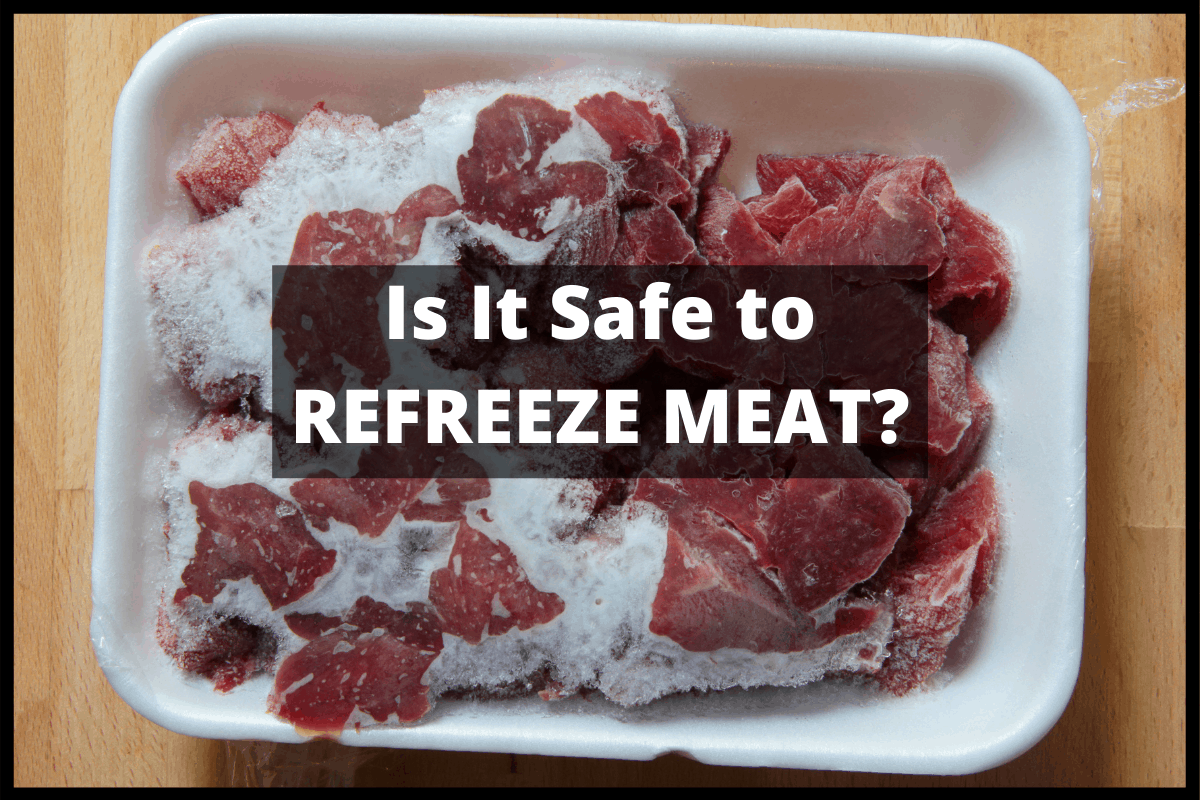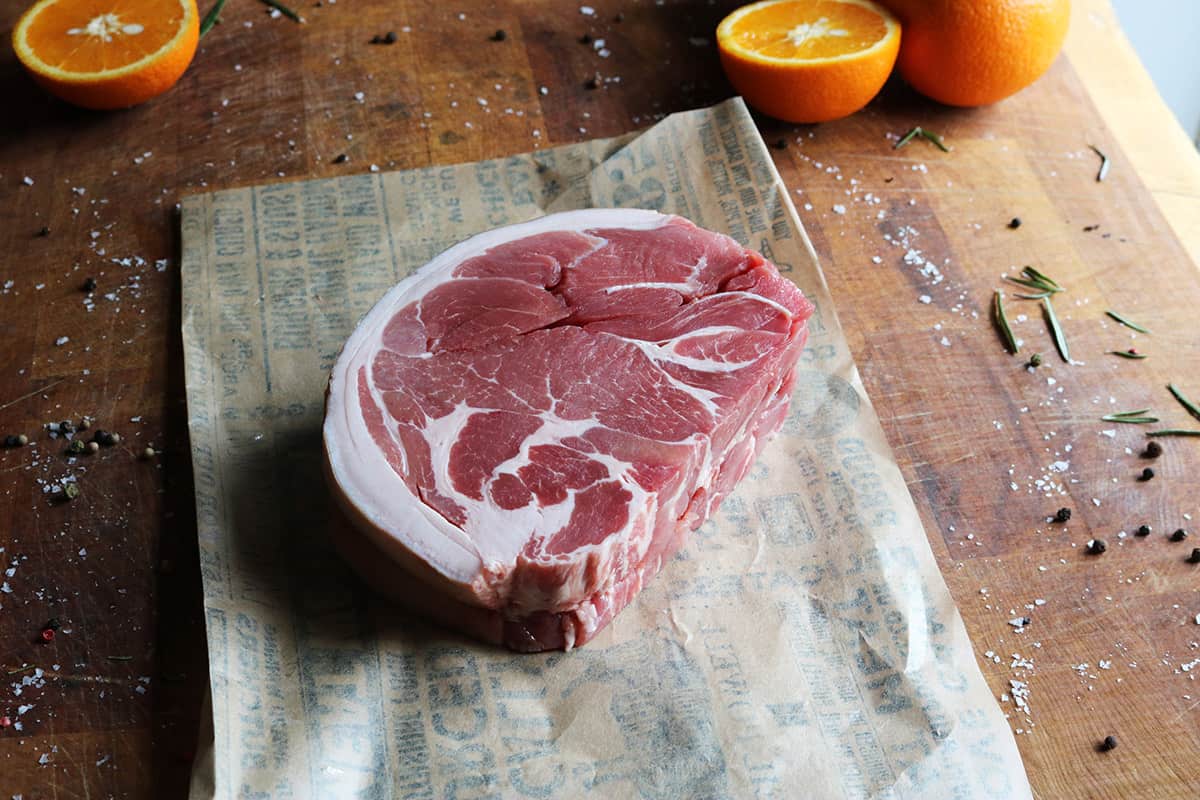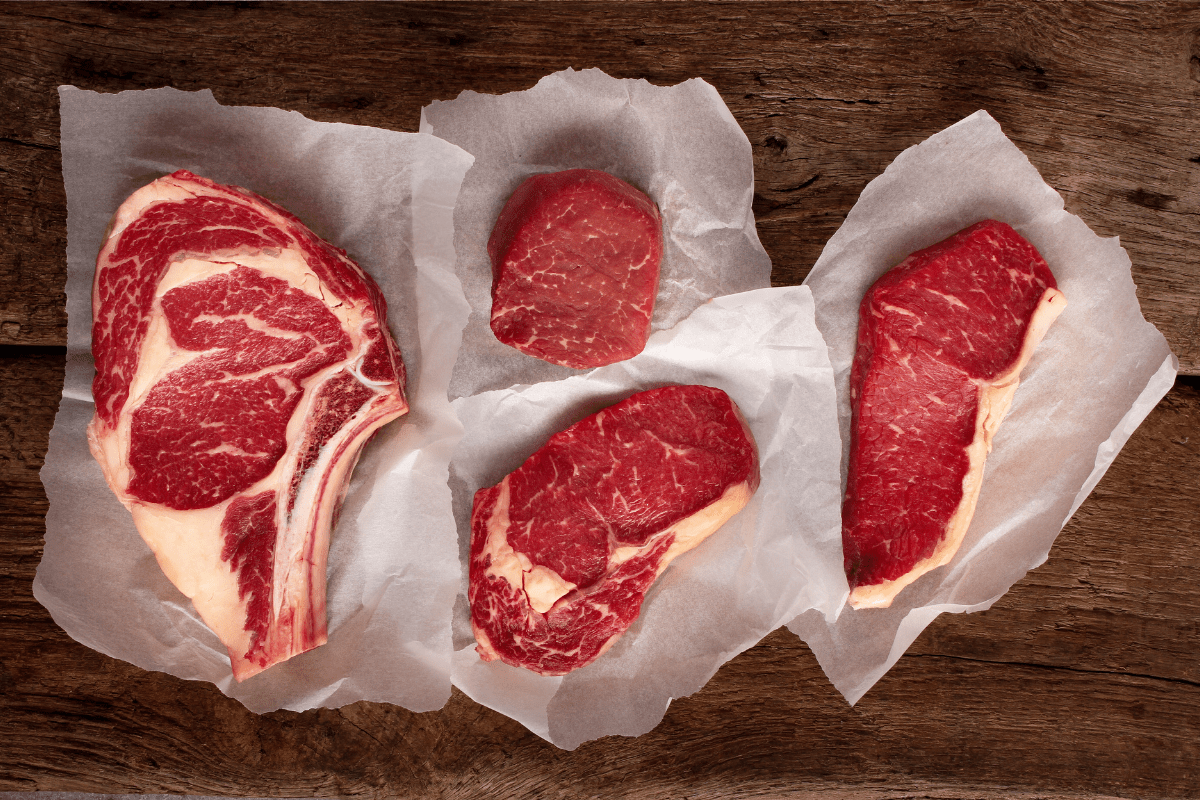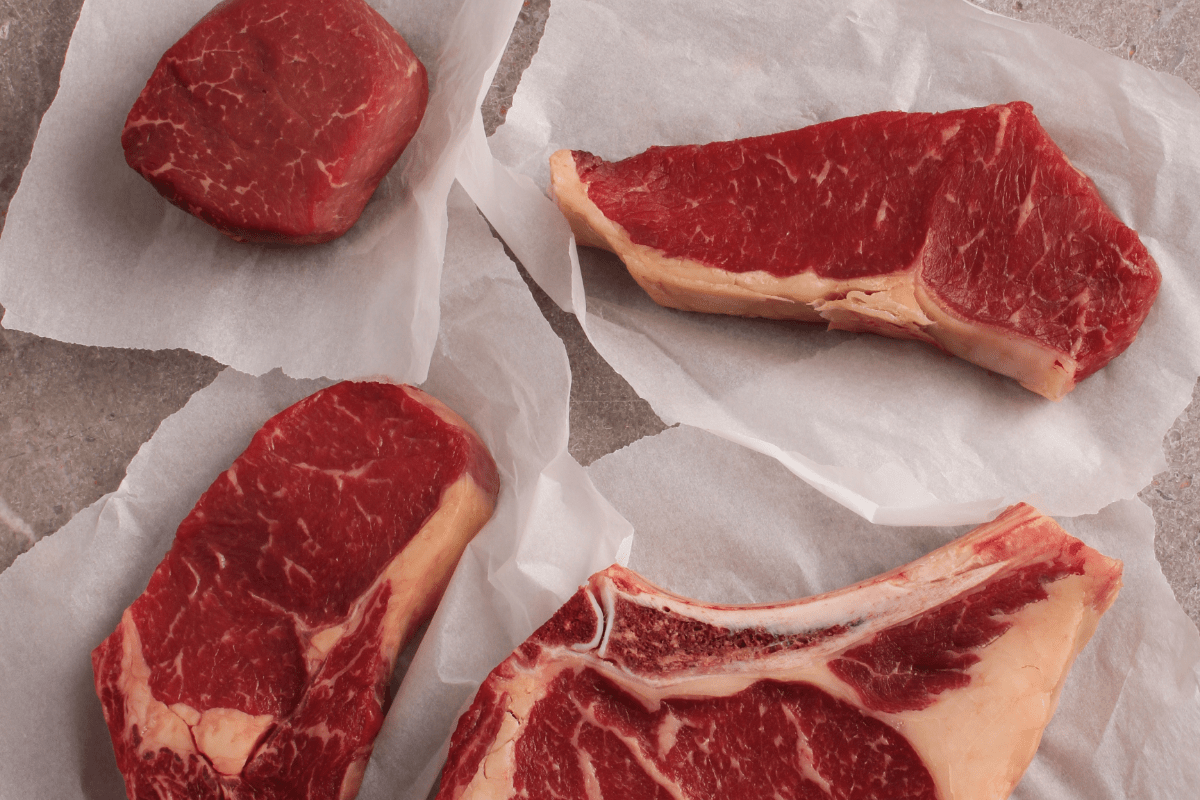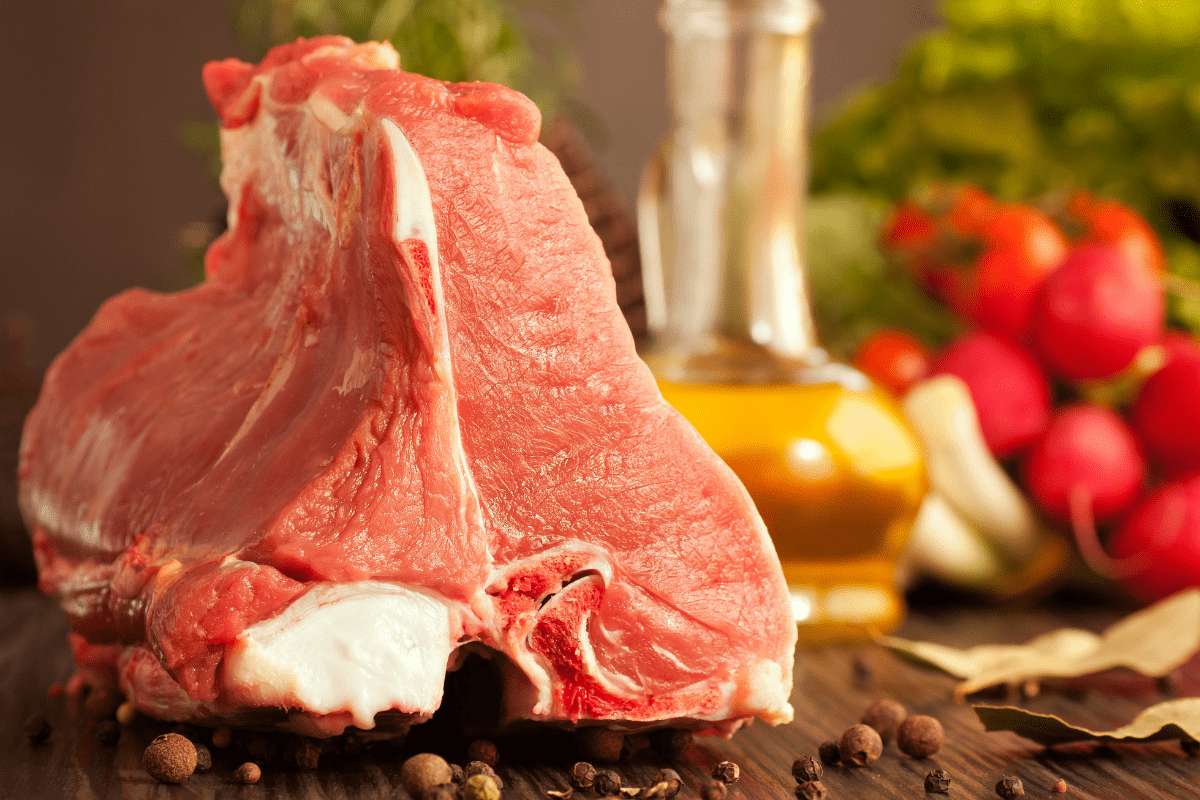When the cold weather arrives and you decide it’s time to make some delicious comforting meals, you may see recipes asking for braising steak or stewing steak and not know what the difference is between the two cuts of beef. This article hopes to answer those questions for you.
So what is the difference between Braising Steak and Stewing Steak? Braising Steak and Stewing Steak are tougher cuts of beef taken from the shoulder of a cow. Braising steak is usually leaner and cooked as slices, whereas stewing steak is cut into bite sized chunks that may break into smaller pieces during cooking. Both cuts require slow cooking in a covered pot with liquid to become tender.
We will now look at the cuts of beef generally used for braising steak and stewing steak, and explain how they differ in appearance and end cooking result. This should help you make an informed decision on which cut is right for you depending on the type of meal you are wanting to cook.
This article may contain affiliate links for which we earn a small commission at no extra expense to you.
Characteristics of Beef Braising Steak
Beef Braising Steak is usually taken from the forequarter of beef which incorporates the shoulder and front leg of a cow. The meat from the forequarter is much tougher than from the hindquarter, and usually carries more fat and connective tissue. However, it is this added fat and tissue that gives the meat such a full and rich flavor.
The beef cuts used for braising steak are solid pieces of meat that will hold their shape when cut into slices. There may be some visible fat content and/or internal veins of gristle in the slices, however these will generally disappear during the cooking process and add a rich flavor to the gravy.

The slices of braising steak are generally browned in a frying pan to seal in the juices prior to being transferred to a casserole dish and finished in a low heat oven.
Long slow cooking in a covered dish containing some form of liquid is essential for the braising steak to break down and become tender. Only enough liquid to ‘braise’ the meat is required to prevent the meat from drying out.
Although water is commonly used, adding beer or beef stock will also add more depth of flavor to the end result.
Braise Definition
verb (used with object), braised, brais·ing.
to cook (meat, fish, or vegetables) by sautéeing in fat and then simmering slowly in very little liquid.
https://www.dictionary.com/browse/braise
Best Beef Cuts Used For Braising Steak
As mentioned before, people that are cooking braising steak are usually wanting to serve ‘slices’ of beef rather than smaller chunks. For this reason, the cuts of beef required will need to be solid enough to hold their shape during the long cooking process.
Here are the different cuts of beef that are generally used for braising steak:
- Top Blade Steak
- Shoulder Steak
- Chuck Eye Steak
- Mock Filet Steak
- Beef Shank
Let’s now look at the different qualities that each of these cuts.
Top Blade Steak

The top blade steak as the name suggests is taken from the top of the shoulder blade in the beef forequarter.
This is a very tasty cut of beef due to the internal marbling and visible vein of gristle running through the centre of the steak. An edging of fat also enhances the flavor of the meat.
Do not be put off by the gristle and fat content as these will cook out during the long slow cooking process and add richness to the liquid gravy within the pan.
These steaks hold up well to the long cooking process and remain as full slices for serving, although they may shrink a little in size as the fat cooks out.
Depending on the the thickness that the steaks have been cut, you can generally expect one steak to be sufficient for a small to medium portion, but may want two steaks for a larger eater.
Shoppers Note!
You may find it harder to buy the top blade steak like this as many butchers now split it down the middle to remove the centre gristle, and sell this cut as ‘Flat Iron’ Steaks.
Beef Shoulder Braising Steak

As you have probably guessed from the name, the beef shoulder steak comes from, yes that’s right, the ‘shoulder’!
The beef shoulder steaks are generally larger in size, and leaner than the blade or chuck steaks, however they do still contain some visible chunks of internal and edging fat, as well as some minor veins of gristle.
The shoulder steaks are quite a dense meat and hold their shape very well during cooking. Again, due to being from the forequarter, they have a good flavor, but maybe not as much as the blade steak, due to the lesser internal marbling.
Depending on the size of the animal, a full slice of shoulder steak would probably be sufficient to get two servings from, unless you had a particularly large eater coming to dinner.
Chuck Eye Beef Steak

The Chuck Eye Steak is also taken from the shoulder of the cow but is a collection of muscles held together by fat and connective tissues.
Generally, the excess fat and less desirable parts of the chuck are trimmed away to make ground beef or stewing beef, leaving just the eye of the meat to cut into steaks or tied as pot roasting joints.
Due to the meat consisting if different muscles, the chuck steak can have a tendency to break down during cooking and you may end up with large pieces of meat after cooking rather than full slices.
The chuck is another very tasty cut of meat, and again, due to the internal fat and tissue, offers a rich gravy as it cooks out.
Beef chuck can vary quite a bit in size and so although you can generally feed two people from one steak, it may even stretch to three from a large animal, or equally one large serving from a smaller chuck.
The fact that the steaks generally break into smaller pieces during cooking may allow you to get away with less per person as it is usually served with a healthy portion of potatoes and vegetables on the side.
Mock Filet Braising Steak
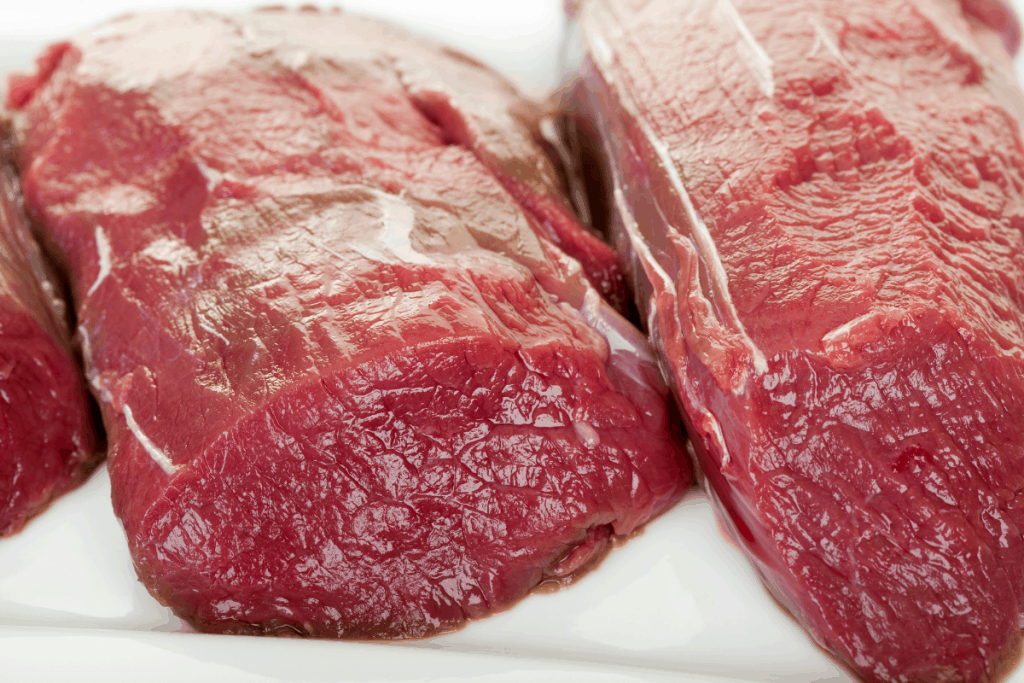
The Mock Fillet, also known by the rather derogatory name of ‘Jewish Fillet’, comes from under the shoulder blade bone.
This small and lean cut of meat gets its name from its resemblance to the much more tender and expensive ‘filet mignon’ cut of beef.
The mock fillet is only a small round muscle that gets smaller as it tapers down. Therefore you may require 2 or 3 pieces per person for a serving.
The muscle is very lean and holds together during cooking, however due to the lack of fat and marbling, it doesn’t have quite the depth of flavor that the other cuts of meat offer.
If lean meat is an important factor in your dietary needs, then this cut of meat would be ideally suited to you.
Beef Shank
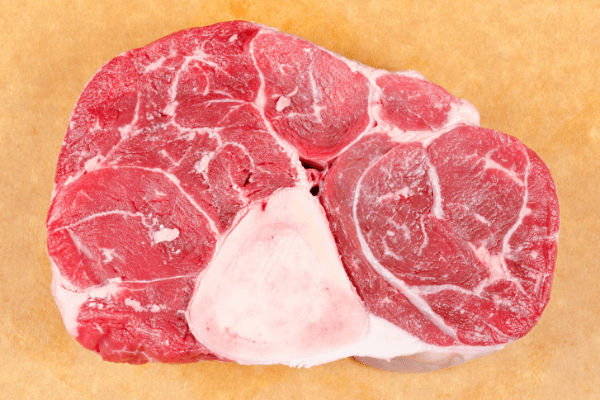
Beef shank, also known as ‘Shin’ of beef, comes from the leg of the animal. It does not necessarily have to be a front leg from the forequarter, any leg does the same.
The shank might not quite fit the description of ‘steak’ as it can be sold both boneless or on the bone.
The shank of beef is extremely tough and so requires the longest cooking time out of all the cuts if it is to break down and become tender.
There are many connective tissues within the meat, however these do melt away during the cooking process and enrich the flavor of your gravy.
Although the toughest cut, it is probably up there with the most flavorful too, and so if you have the time required to cook this cut of beef, you really will be rewarded with a deliciously rich and hearty meal.
Due to the length of cooking time, it is not unusual for the meat to fall apart during cooking and so you will likely be serving chunks of meat as opposed to slices.
Again, depending on the size and thickness of the shank rings, will determine how many rings you need to feed your guests.
Cooking Tip!
If you decide to cook the shank with the bone, many people prefer to do it over 2 days. After day one, allow the dish to cool and remove the bones and excess surface fat. On day two, reheat the meat with the vegetables in the rich gravy provided from the bones.
Characteristics of Stewing Steak
Stewing Steak is produced when larger cuts of beef are trimmed of visible fat and gristle, and then cut into lean bite sized pieces.
Much like the ‘brasing’ steak, the stewing steak is also browned in a frying, or heavy duty pan before being fully immersed in liquid and slow cooked. The gentle cooking in liquid means the stewing steak is gently boiled as opposed to being ‘braised’
Definition of Stewing
stew / stewed / stewing
to undergo cooking by simmering or slow boiling
https://www.dictionary.com/browse/stewing
Different Types of Stewing Beef
Although we are talking about Stewing ‘Steak’ in this article, it is important to point out that there are similar sounding products available that don’t necessarily offer the same results.
Here are the 4main types of diced beef you may see being sold and how they differ from each other:
- Stewing Steak
- Diced Steak
- Stewing Beef
- Diced Beef

Stewing Steak
Stewing steak is when the same cuts of meat that provide ‘braising steak’ are cut into smaller bite sized chunks as opposed to being sold in sliced steak form.
Usually any excess fat and gristle has been removed and so the chunks of meat are quite lean in nature.. You may seen some fat marbling running through the meat but this will cook out during the slow cook process.
Stewing steak will generally take less cooking time than ‘stewing beef’ mentioned below.
Stewing Beef
Stewing Beef is a general term used for any off cuts of beef that come from the tougher cuts of meat and have been cut into bite sized chunks.
Generally the stewing beef will not be as fully trimmed of visible fat and gristle as the stewing ‘steak’ and will be of slightly lesser quality overall. As a result, you will find that stewing beef is less expensive than the stewing steak.
The stewing beef will require longer cooking than the stewing steak, but will still result in a very flavorsome dish. You may encounter a few chunks of tougher or gristly meat in the end dish.
This is the perfect option if you want to use a crock pot and have your meal cooking all day while you are working and have a tasty meal to come home to and a house filled with a delicious aroma.
Diced Steak
Diced steak is usually given to beef that has been cut from the more prime cuts of beef from the hindquarter of beef.
The chunks of diced steak may include trimmed off cuts from the following cuts:
- Beef Round
- Top Sirloin
- Prime Rib
- Striploin
- flank steak
The chunks of meat used in diced steak will be much more tender than the stewing steak and can be used for faster cooking dishes such as kebobs or stir fry dishes.
Due to the fact that diced steak contains prime cuts of beef, you can expect to pay considerably more than the stewing steak, however if making kebobs or stir fry dishes, it will work out much cheaper than buying the actual prime steaks to cut up.
Diced Beef
Diced beef basically means just that. Any cut of beef can be included, and will likely be a mixture of some of the prime cuts and lesser cuts mixed in.
Diced beef is usually a good choice if you are looking for a lean option that won’t take as long to cook as the stewing steak or beef. Curries, stroganoffs and pies do well with using diced beef.
Although it is a mixture of cuts, the diced beef will probably be closer to the diced steak than the stewing steak in quality and will have excess fat and gristle trimmed away.
It will be more expensive to buy then either of the stewing options, but less expensive than the diced steak.
Diced beef is the middle of the road option that will allow you to cook most beef dishes, and you can expect it to be flavorful and somewhat tender overall.

Although we have gone in depth as to what each cut of meat means, the main thing you want to remember when deciding whether you want braising steak or stewing steak is:
